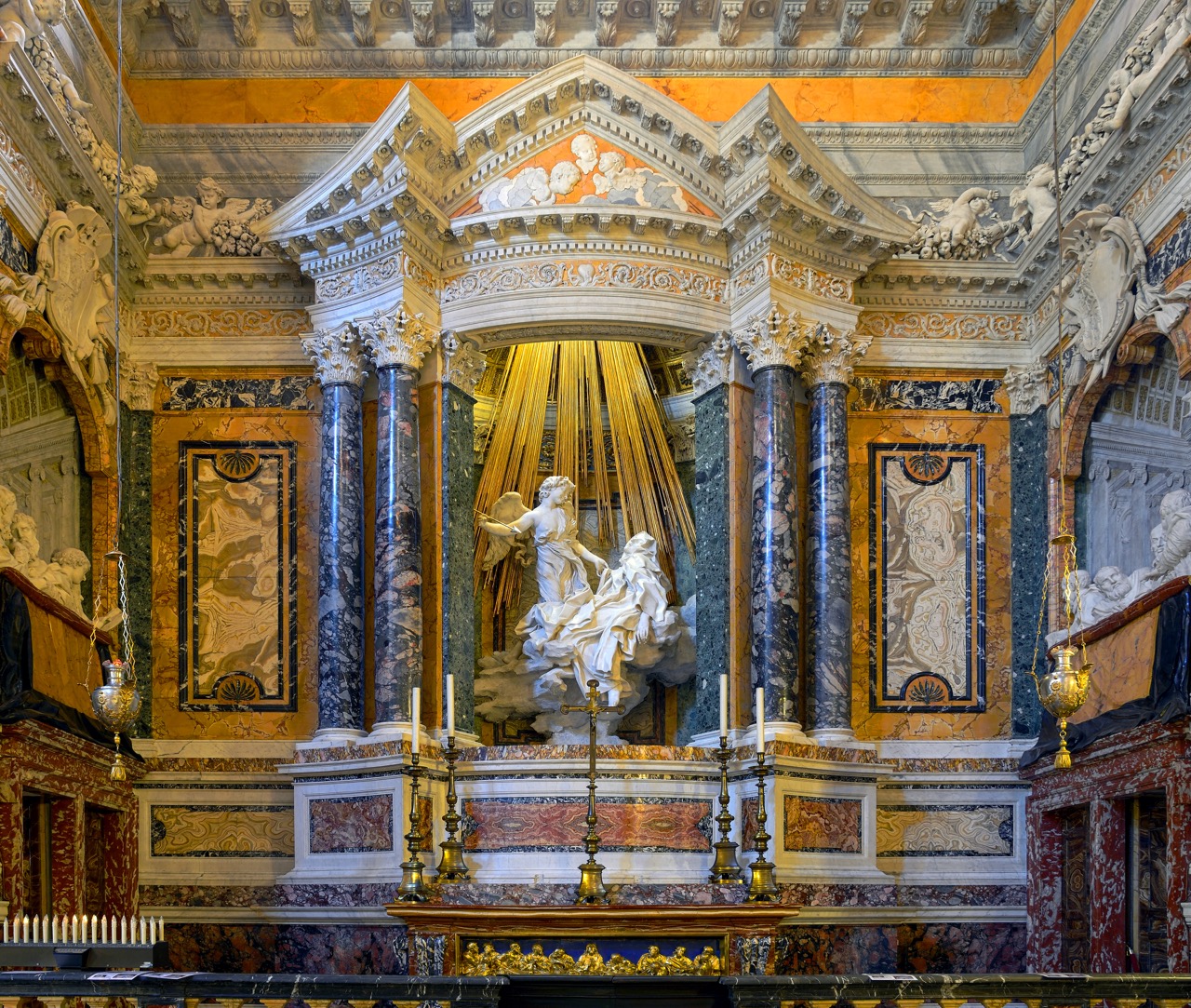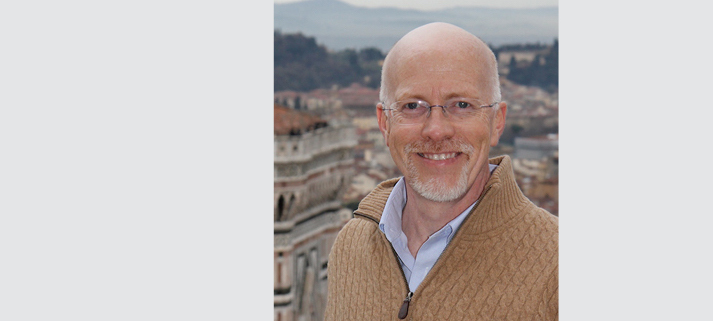
The Ecstasy of Saint Teresa: An Introduction by Professor Tom Poundstone
A veteran Theology and Religious Studies scholar, Poundstone offers his insight on Bernini's seminal marble sculpture group–and popular wedding site. "Could there be a more felicitous portent for marital bliss?" he writes.
Professor Thomas J. Poundstone has taught theology and religious studies at Saint Mary's for nearly three decades and is the former director of the College's Jan Term program. In this piece, he offers his concise analysis of Bernini's seminal marble sculpture group The Ecstasy of Saint Teresa, located at the Santa Maria della Vittoria in Rome. Professor Poundstone provides a more extensive, in-person introduction during his Jan Term travel course, "Encountering Christian Art In Rome."
SETTING
Bernini is praised for his synthesis of sculpture, painting, and architecture. The church was extended so that a hidden window could be added to cast light upon the sculpture, as if from the Holy Spirit. Cherubs painted on the entrance arch bear a banner inscribed with the words Jesus spoke in one of Teresa's visions: "If I had not created heaven, I would create it for you alone."
ANGEL
"He was not tall, but short, and very beautiful," related Teresa of her vision, "his face so aflame that he appeared to be one of the highest types of angel who seem to be all afire."
SWOON
Bernini brings all the passion and rapture of Teresa's story to represent, perhaps for the first time, the now-immortalized image of a swoon: head thrown back, eyelids half-closed, mouth slightly open as she moans in ecstasy.
GARMENTS
Teresa is covered in monastic habit, yet through Bernini's genius, the heavy garments reveal rather than conceal Teresa's internal state.
FOOT
Her dangling bare foot is emblematic of the Discalced ("Shoeless") Carmelites, the reformed religious order Teresa founded (from Matthew 10:10, "no sack for the journey, or a second tunic, or sandals, or walking stick").
CLOUDS
In translating Teresa's mystical vision into stone, Bernini first captured Teresa's reports of levitation by having her borne on a bank of marble clouds. (The clouds are hollow, to decrease the weight of the wall-mounted sculpture.)

CONTEXT AND BACKGROUND
As inspiration for his 1652 sculpture Saint Teresa in Ecstasy, Gianlorenzo Bernini kept returning to one passage in the autobiography of Saint Teresa of Avila:
"It pleased our Lord that I would sometimes see this vision: very close to me, on my left, an angel appeared in human form... In his hands I saw a golden spear and at the end of the iron tip I seemed to see a point of fire. With this he seemed to pierce my heart several times so that it penetrated to my entrails. When he drew it out, I thought he was drawing them out with it, and he left me utterly consumed by the great love of God.
'The pain was so sharp that it made me utter several moans; and so excessive was the sweetness caused me by this intense pain that one can never wish it to cease, nor will one's soul be content with anything less than God.'
To which a French diplomat reputedly responded: 'If this is divine love, I know all about it.'"
Freudian interpretations aside, the Catholic church has celebrated the sculpture, which is captioned "Mother of Spirituality" and widely praised as a religious masterpiece. Its presence in the transept of Santa Maria Della Vittoria church in Rome has made the church one of the city's most popular sites for weddings.
Could there be a more felicitous portent for marital bliss?
Learn more about Saint Mary's renowned Theology and Religious Studies Department. Sound like a fit? Consider applying.
Want to see Bernini's sculptures in person? Explore Jan Term, Saint Mary's signature program. One semester, one course, endless possibilities.